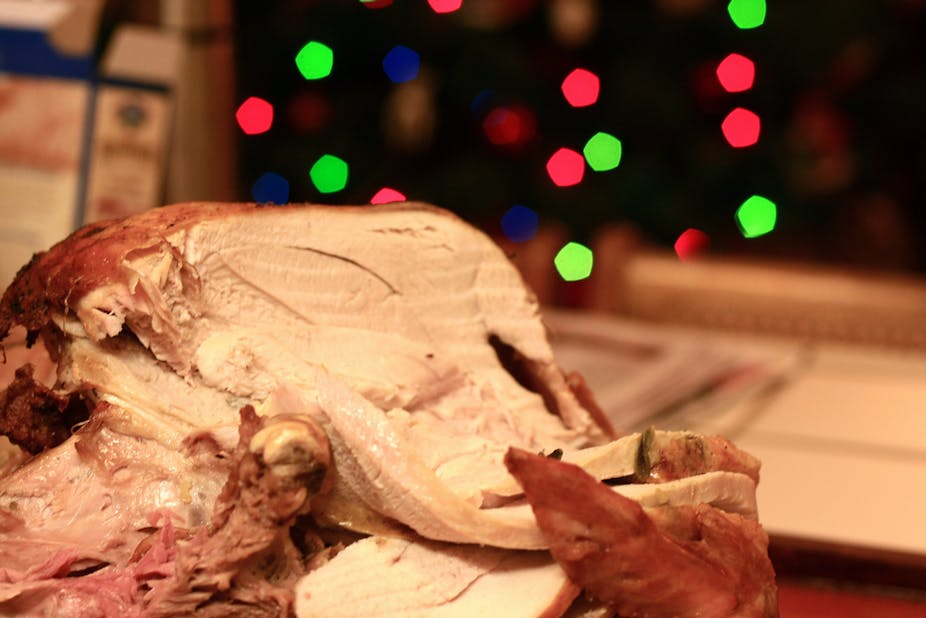At Christmas, size is everything: so says an online “oven selector guide”. And it is true, ovens are designed and optimised for roasting large birds. As a result, they are typically oversized for regular use – making their total energy consumption greater than necessary. It is not only ovens that are designed to cope with the special demands of the festive season.
Christmas is a moment of peak load within the kitchen, for parcel delivery services, and for road, rail and communication networks. Looking at this period helps us understand the relation between capacity, flexibility and energy demand.
Let us start with the oven. For many ovens, December 25 is the day of peak demand – in the UK, something like 10m turkeys are roasted at roughly the same time.
The key features of this event – many people and a turkey large enough to feed them all – are inscribed in the details of oven design. There are similarities between a Christmas dinner and a traditional Sunday roast, and it is perhaps not surprising that the European standard test of oven efficiency, the “wet brick test”, is designed to simulate roasting a chicken.
No one knows much about how ovens are actually used, but we do know that the traditional Sunday dinner is in decline and that oven-baked pizzas are increasingly common. It would therefore be possible, and more efficient, to produce ovens optimised for normal use rather than special occasions.
The problem is oven sizes are fixed: having spare capacity through the year avoids the need for special measures, like renting an extra oven for the day – a strategy adopted by one of our great grandmothers in the 1930s.
While there are year round implications for energy demand, oven design is inseparable from the social conventions of Christmas. If turkey was not the classic meal and if roasting was not the norm – a large stew produced on the hob could feed as many people – ovens would not be sized and designed as they are today.
Optimising for Christmas
This is not the only situation in which year round capacity reflects anticipated peak demand and therefore leaves a surplus for much of the time. Cars, for instance, are generally able to carry four or more passengers plus all their luggage, yet on average they are occupied by just 1.6 people.
However, capacity is not always fixed in quite this way. Consider systems for delivering parcels ordered online. In this case the Christmas peak reflects the need to dispatch a very large number of items and ensure they arrive before the critical day – in short, it is the need for simultaneity, not size as such, that matters.
While there are physical limits in terms of capacity – the volume of warehousing and lorry space is fixed, much like the size of the oven – the difference is that there is scope to work harder: to hire seasonal staff, and to push more items through the system.

Shipping and logistics businesses are simply not optimised for Christmas peaks, and no one would expect this either. In this example measures adopted to cope with extreme pressure are layered on top of a system that is in fact designed for regular loads, unlike the oven which is sized for peak demand.
Christmas traditions: past and present
Christmas peaks provide other insights into the patterning of social life and the energy demands that follow. In the UK there used to be a detectable spike in electricity demand associated with the Queen’s speech. At 3pm, other activities paused and televisions were switched on, closely preceded and followed by millions of kettles.
This is no longer so. Instead, the anticipated afternoon surge, once the turkey has been eaten, is in the flow of data. An estimated 136,000 extra gigabytes of data will be used on Christmas Day alone. These details provide a glimpse of wider, year round, trends in forms of information, communication and entertainment. As ways of spending time evolve – even on Christmas day – new peaks and surges occur.
Ironically, the extreme circumstances and the unusual synchronisation of Christmas reveal things about “normal” energy demand. Appliances and systems are sized to cater for what are essentially social loads like those of eating Christmas dinner together.
As Christmas also demonstrates, there are different types of peak and different types of response, such as maintaining idle standby capacity at all times (exemplified by turkey-sized oven), or designing and optimising for base load and augmenting that at critical moments (hiring seasonal staff).
Perhaps most important of all, Christmas peaks in demand arise as a consequence of what people do: as people use the internet more and watch less TV, new peaks emerge. Normal and extreme forms of energy demand are alike in being embedded in the ongoing dynamics of daily life.

